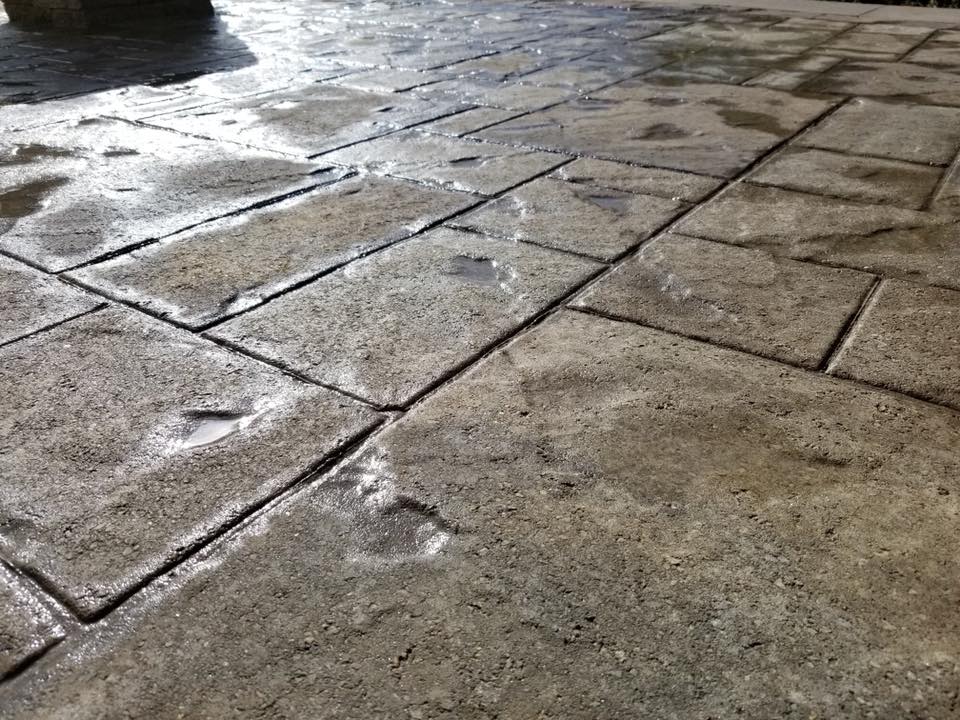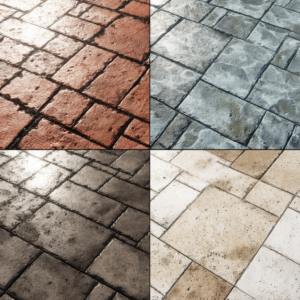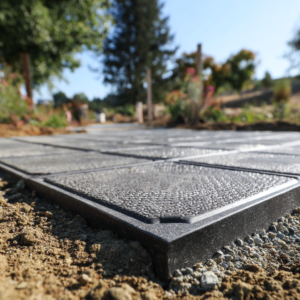As popular as they are to all the hardscape aficionados, pavers are not very well known to the big public. For that reason, when getting in contact with them for the first time, many people might get confused with some aspects. One of the most common questions we hear, for example, is: “Can you lay pavers in the rain?”.
That only shows how little people know about how pavers work and how good they actually are. Knowing how pavers function is fundamental to understand the things that can and can’t be done with it.
So it’s only fair that we start from the beginning and explain how pavers work, and that alone should clarify some basic questions you might have, so let’s get right into it.
Jump to:
Can You Lay Pavers in the Rain?
A basic paver installation consists of lots of digging and lots of sand, both things that don’t go very well with rain.
Pavers need to be placed on a base that is properly leveled to avoid any problems with drainage. Most of this is ensured at the moment of the excavation. And this excavation should be done with the land as dry as possible to have precise measurements.
Also, sand plays a big part in any paver installation. It is used both in the base in which the pavers are placed upon and the final step of the installation, when it is spread across the entire installation.
The goal is to fill every join between paver to create an interlocked system. this system allows the pavers to work together and distribute weigh. Thanks to it, pavers can withstand tremendous amounts of pressure without breaking a sweat.
So rain, as you can probably tell, does not go well with it. Especially because the sand used for that purpose, polymeric sand, activates with water. So trying to sand your installation in the rain can be catastrophic.
To summarize: No. You cannot lay pavers in the rain.

What is the Best Weather to Install Pavers?
A paver installation should be planned to happen during a dry spell of, at least, five days. With no rain two days prior to the installation, the land will be dry and easy to work with.
A couple of dry days after the installation is done are also important, to give the sand and pavers enough time to dry and settle. So keep an eye on the forecast and make sure to plan your paver installation according to the weather.
As for the temperature, as long as it is not cold enough for the ground to be frozen, you should do just fine.
Too much wind can also be a problem. With all that sand going around, wind can easily spread it away and make it difficult to work with. Clouds of dust can spread through the neighborhood and become an inconvenience to your neighbors, so pay attention to that.
Basic Steps – How to Prepare for a Paver Installation
The first thing you need to keep in mind is how complex things can get.
Many people decide to tackle a paver installation as a DIY project, only to end having to ask for help during the middle of it. A paver installation requires planning and careful execution, especially during the first steps.
A badly excavated installation can cause a tremendous amount of problems in the future. So make sure you know about slope and drainage before moving any further. This article will give you an in-depth guide on the main aspects of a paver installation.
Paver also need to be placed with proper space between them. Too close, and they won’t be able to shift in place, and that cause cracks and elevations in the installation. On the other hand, a too wide space between each paver will make them shift too much and completely sunk.
Most pavers already come with crevices built into them that we call spacers. At the moment of the installation, these crevices will touch each and establish a proper space.
In case your pavers don’t have those crevices, you can buy spacers separately.
Once your pavers are placed, you’re going to need to sand them. Sanding a paver installation consists in filling the joints between the pavers with polymeric sand. The process is simple and easily done in less than an hour.
Simply spread the polymeric sand across the entire installation and use a broom to sweep it around until all the joint are filled. Afterwards, you slightly wet the entire installation in order to activate the sand.
At this point, you’re going to have to give your pavers a few weeks rest. This period is necessary so the sand can be properly cured.

Professional Installation
We discussed the steps of a paver installation on a very basic level. Things can get much more complicated than that, and there are many more details that we didn’t discuss in depth here.
But the few things we did discuss can point in the right direction, including knowing that you can’t lay pavers in the rain. It is of extreme importance that the pavers are as dry as possible at the moment of the installation.
We have seen many homeowners make that and other mistakes over our 22 years of activity. Mistakes that could have easily been avoided had them contacted a professional before starting the installation.
That’s why we always recommend getting in contact with hardscape professionals in your area to make sure you end up with the best possible paver installation.
If you happen to be on our area of activity, Sarasota and Manatee Counties, in FL, why not give us a call at +1 941 586 9140 or email us at [email protected]. We would be happy to hear from you and help in any way we can.



